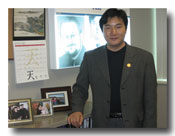Program Information
The Update of a XML Composing Tool for TrueBeam Developer Mode
Y Yan1*, W Mao1 , S Jiang1 , (1) UT Southwestern Medical Center, Dallas, TX
Presentations
SU-E-T-327 Sunday 3:00PM - 6:00PM Room: Exhibit HallPurpose: To introduce a major upgrade of a novel XML beam composing tool to scientists and engineers who strive to translate certain capabilities of TrueBeam Developer Mode to future clinical benefits of radiation therapy.
Methods: TrueBeam Developer Mode provides the users with a test bed for unconventional plans utilizing certain unique features not accessible at the clinical mode. To access the full set of capabilities, a XML beam definition file accommodating all parameters including kV/MV imaging triggers in the plan can be locally loaded at this mode, however it is difficult and laborious to compose one in a text editor. In this study, a stand-along interactive XML beam composing application, TrueBeam TeachMod, was developed on Windows platforms to assist users in making their unique plans in a WYSWYG manner. A conventional plan can be imported in a DICOM RT object as the start of the beam editing process in which trajectories of all axes of a TrueBeam machine can be modified to the intended values at any control point. TeachMod also includes libraries of predefined imaging and treatment procedures to further expedite the process.
Results: The TeachMod application is a major of the TeachMod module within DICOManTX. It fully supports TrueBeam 2.0. Trajectories of all axes including all MLC leaves can be graphically rendered and edited as needed. The time for XML beam composing has been reduced to a negligible amount regardless the complexity of the plan. A good understanding of XML language and TrueBeam schema is not required though preferred.
Conclusion: Creating XML beams manually in a text editor will be a lengthy error-prone process for sophisticated plans. A XML beam composing tool is highly desirable for R&D activities. It will bridge the gap between scopes of TrueBeam capabilities and their clinical application potentials.
Contact Email:


